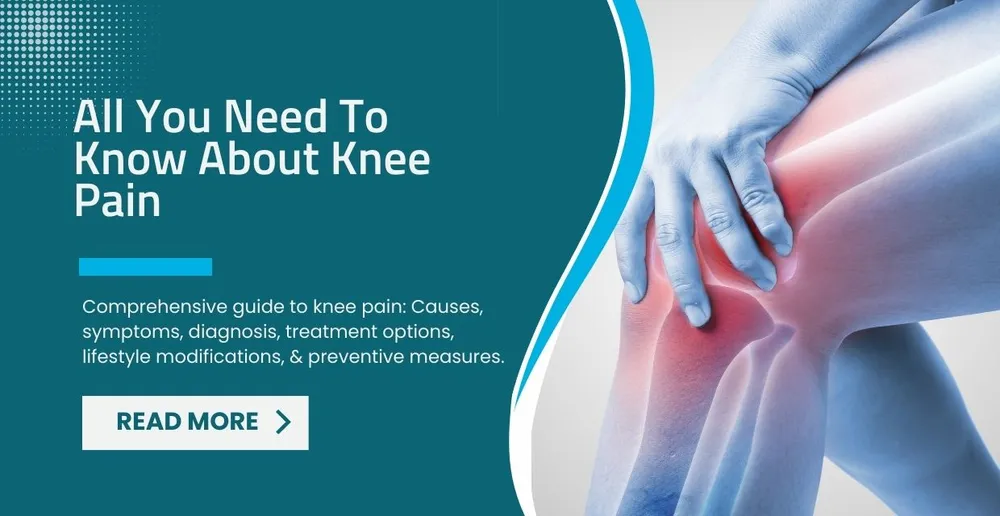Dos And Don’t During Knee Pain
The wear-and-tear form of arthritis, osteoarthritis, causes discomfort for about 31 million individuals worldwide. Since the damage to the joints cannot be undone once the disease has begun, it is crucial to stop knee osteoarthritis from worsening.
According to a 2018 survey, the risk of experiencing knee osteoarthritis symptoms rises with each decade of life, particularly between the ages of 55 and 64. Osteoarthritis has been progressively increasing in prevalence over the past few decades due to rising obesity rates and an aging population.
Osteoarthritis signs and symptoms typically appear gradually over time. Moving your knees could make them hurt, and putting even minimal pressure on them might make them feel tender. Your knees could feel stiff, or you might be unable to move them through their full range of motion if you haven't moved for a while. You might even experience a grating sound or sensation when you move your knees. The firm tissue between your joints that aids in motion, cartilage, can cause these symptoms to appear.
Other variables, in addition to age and weight, can increase your risk of having osteoarthritis knee discomfort. For example, even if the repetitive motions or sports-related injuries occurred years ago, athletes may be susceptible to knee osteoarthritis; jobs that put repetitive stress on your knees also carry a comparable risk. Additionally, an inherited trait that decreases the body's ability to create cartilage may also contribute to some people's genetic predisposition to the condition, which raises the risk of injury to the knee joint.
Fortunately, there are several methods for treating and relieving knee pain. You may manage osteoarthritis knee pain by making lifestyle changes, such as frequently exercising in ways that are kind to your joints and eating healthily. You can also do this by paying attention to your body and taking your medicine as prescribed. Let's examine a few of these changes.
Do: Knee Joint-Friendly Exercises
Walking is an example of low-impact aerobic activity that is considered arthritic-friendly. They aid in strengthening the area around the injured joints and keep them aligned and operating as they should.
Don't: Engage In Exercises That Are Repetitive And High Impact Can
Damage Your Joints
Running and tennis are two activities that might strain your already-damaged knees. This kind of workout makes things worse, which perpetuates the vicious cycle. When a muscle hurts, you stop utilizing it, weaken, and your alignment suffers. Additionally, this may necessitate joint replacement surgery. If you feel any pain in the body for a long time, pay attention to your body and don't ignore it.
Do: Strengthen Your Leg Muscles by Including Flexibility and Strength Training
Along with aerobic activity, a fitness program for osteoarthritis should include strength and flexibility training. Stretching can assist, maintain and occasionally enhance flexibility around the knee while strengthening exercises support the muscles around the joint.
Do: Prior To And Following The Exercise, Warm Up And Cool Down.
If you have knee osteoarthritis, hold off on starting your workouts. A warm-up lubricates your joints to make moving about easier and make you feel less stiff, which minimizes the risk of damage throughout your activity. After exercise, cooling down might help you recover. You can receive guidance on the best warm-up and cool-down activities from a physical therapist or trainer.
Do: Keep Your Weight Healthy To Reduce Stress On Your Knee Joints
Your already damaged knees are under further pressure or stress when you carry more weight. Losing weight can ease knee discomfort and perhaps slow cartilage deterioration if you are overweight. Knee pain from being overweight can be relieved by losing weight.
Do: Wear Comfortable, Knee Joint-Friendly Shoes
Numerous studies indicate that choosing the right shoes is important if you have knee osteoarthritis. The force applied to the knee during daily activities can be reduced by wearing flat, flexible shoes that imitate the foot's natural motion.
Don't: Ignore New or Worsening Knee Osteoarthritis Symptoms
Since knee osteoarthritis is a chronic condition, pain may always be present. However, if the pain becomes more intense, occurs during moments of rest rather than after periods of exercise, or wakes you from sleep, it may indicate that the osteoarthritis in your knee is getting worse. Additional signs include edema, a locked knee, and a knee that gives way. If your symptoms change or get worse, let your doctor know right away because your treatment plan may need to be changed.



